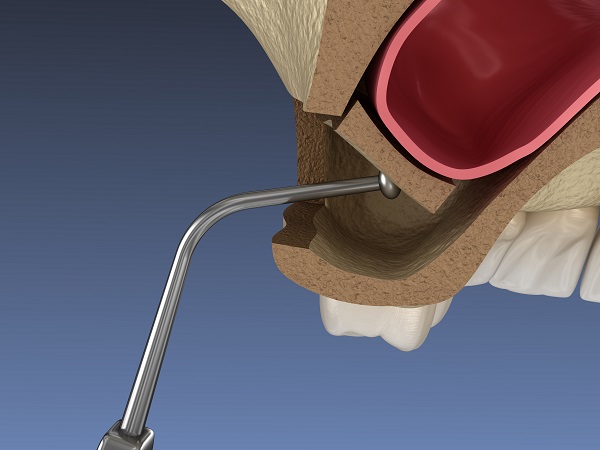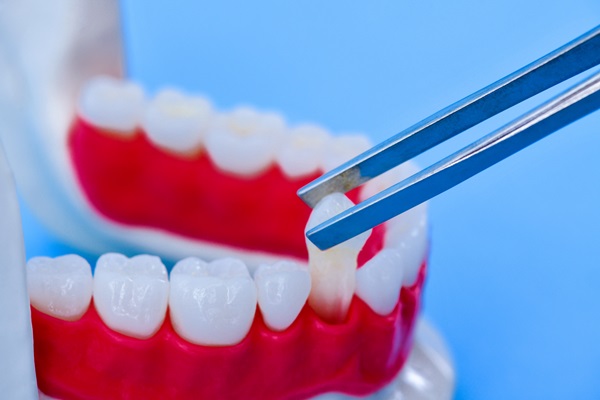What Is a Popular Technique for a Sinus Lift Procedure?

An oral surgeon might recommend the sinus lift procedure if your jawbone needs to be built up so it can hold dental implants. Also known as a sinus bone graft, the treatment is used to build bone tissues in the upper jaw.
Oral surgeons or periodontists typically perform the procedure. Patients need to be fully healed from their sinus lifts to proceed with getting implants.
The sinus lift procedure
The sinus lift procedure augments bone tissues in the maxillary sinus to thicken it so it has enough bone tissues to hold implants in place. Oral surgeons can create more bone for an implant by lifting a patient’s sinus and grafting in bone tissue.
Dental implants are oral prosthetics that replace lost teeth roots. They are typically rod-shaped and are inserted into bone tissues in the jaw. The bone tissues hold the implant in place with frictional forces, just like a piece of wood holds a nail in place. Therefore, a patient’s jawbone needs to have enough depth to hold an implant in place.
Reasons that a person might need bone tissues added to their upper jaw include:
- Cancer
- Congenital disabilities
- Genetics
- Gum disease
- Bone tissue deterioration due to lost teeth
Sinus grafts are often recommended for implants when the patient has less than four millimeters of bone depth where implants will be placed.
There are several different ways to perform a sinus lift. Factors like why the sinus lift is being performed and how much depth the patient’s jawbone currently has determine how an oral surgeon approaches the situation. Here is what the procedure typically looks like:
- The patient might be given oral or IV sedatives to keep them calm and relaxed during the treatment
- A local anesthetic might be injected around the area that will be worked on
- Incisions will be made into the patient’s gum tissues to expose their jawbone
- A small piece of bone tissue will be cut and raised into the sinus cavity
- Bone grafts will be attached to the lifted area; the material used can be taken from other parts of the patient’s body or synthetic material can be used
- The oral surgeon will suture any incisions made
Recovery
After the procedure, the oral surgeon will educate the patient on how to take care of their mouth. Most patients will experience swelling, pain, and bleeding after getting a sinus lift. These side effects should go away after a few days.
The patient might be prescribed antibiotics to help lower the risk of infection. Vigorously sneezing or blowing the nose should be avoided for the first week after getting the graft to prevent moving the graft material. In addition, patients should avoid brushing for a few days because that can lead to clots that form in the sinus being dislodged or bleeding.
Explore sinus lifts
You might need a sinus lift to be eligible for dental implants. Give us a call or visit our Lee's Summit clinic to set up an appointment with our dentist.
Request an appointment here: https://spectrumsurgical.net or call Facial Spectrum at (816) 524-4334 for an appointment in our Lee's Summit office.
Check out what others are saying about our services on Yelp: Read our Yelp reviews.
Recent Posts
A dental implant is considered the gold standard of dental restorations. Titanium rods act as dental roots that stimulate the jawbone. The artificial crowns replace the missing ones above the gumline. These restorations are what you need to have stable, natural-looking teeth again. Here are the details about the role of a dental implant in…
A dental implant is considered the gold standard of dental restorations. Titanium rods act as dental roots that stimulate the jawbone. The artificial crowns replace the missing ones above the gumline. These restorations are what you need to have stable, natural-looking teeth again. Here are the details about the role of a dental implant in…
A regular dentist can refer you to an oral surgeon if you need more dental care. This type of surgeon can perform procedures that can improve the face, mouth, or neck. Understanding the reasons for a referral to this provider can help you prepare for your procedure. Here are the reasons your dentist will refer…
A sinus lift or sinus augmentation can build up your upper jaw. This procedure is invasive. The dentist will take healthy bone and place it in the section of the maxilla that needs it. Here are the sinus lift benefits that you must consider.Studies show that a thinning upper jawbone can result in the weakening…

